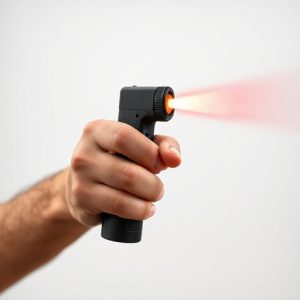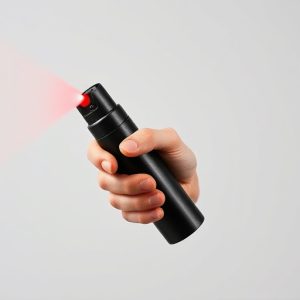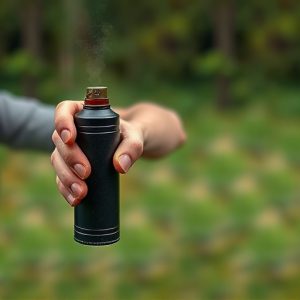Police-Grade Pepper Spray: Chemistry, Regulations, and Safety Applications
The strongest legal pepper spray concentrations, typically 5-10 ppm of capsaicin, offer law enforcem…….
The strongest legal pepper spray concentrations, typically 5-10 ppm of capsaicin, offer law enforcement a powerful tool for controlling suspects while minimizing risk of permanent harm. Regulations govern capsaicin levels, application methods, and officer training to ensure responsible use. Proper training, targeting the eyes and face, and regular maintenance are crucial for maximum effectiveness and minimization of risks to both officers and citizens.
In the realm of law enforcement, pepper spray stands as a versatile tool for crowd control and self-defense. This article delves into the science behind police-grade inflammatory pepper spray compounds, focusing on understanding the active ingredients that make up the strongest legal pepper spray concentration. By exploring legal considerations and regulations, we uncover the applications and safety precautions essential for maximizing effectiveness while minimizing risks associated with this powerful substance.
- Understanding Pepper Spray Chemistry: Unveiling the Active Ingredients
- Legal Considerations and Regulations for Police-Grade Pepper Spray
- Applications and Safety Precautions: Maximizing Effectiveness While Minimizing Risks
Understanding Pepper Spray Chemistry: Unveiling the Active Ingredients
Pepper spray, a widely used non-lethal weapon by law enforcement agencies worldwide, is a chemical compound designed to temporarily incapacitate individuals through irritation and pain. Understanding its chemistry is crucial when assessing its effectiveness and safety. The primary active ingredient in pepper spray is capsaicin, derived from chili peppers. This compound stimulates nerve endings, causing intense burning sensations and temporary blindness.
The strength of pepper spray is often measured in parts per million (ppm), indicating the concentration of capsaicin. The strongest legal pepper spray concentrations typically range from 5 to 10 ppm, ensuring it remains legally acceptable while providing maximum efficacy. This chemical’s unique properties make pepper spray a powerful tool for police, allowing them to control and subdue suspects effectively.
Legal Considerations and Regulations for Police-Grade Pepper Spray
Pepper spray, a powerful law enforcement tool used for crowd control and self-defense, is subject to strict regulations and legal considerations. When it comes to police-grade pepper spray, the primary focus is on safety and effectiveness while ensuring adherence to local, state, and federal laws. The strongest legal pepper spray concentration is typically determined by its active ingredient, capsaicin, and the amount present in each canister.
Regulations governing pepper spray use vary across jurisdictions, dictating factors like permissible concentrations, application methods, and training requirements for officers. For instance, many regions limit the maximum capsaicin level to ensure the spray remains non-lethal and doesn’t cause severe health complications. The specific regulations also outline when and how officers can deploy the spray, emphasizing responsible use to minimize harm to both suspects and bystanders.
Applications and Safety Precautions: Maximizing Effectiveness While Minimizing Risks
Pepper spray, with its potent active ingredient capsaicin, serves a wide range of applications in law enforcement and personal defense. Its primary use is to incapacitate individuals temporarily, providing officers with valuable time to control volatile situations. The effectiveness of pepper spray lies in its concentration—the highest legal concentrations offer more control and less risk of causing permanent harm compared to lower-grade formulations.
Safety precautions are paramount when handling and deploying this powerful tool. Proper training ensures that officers use it responsibly, aiming for the eyes and face to minimize inhalation. Additionally, regular maintenance of equipment and familiarity with different spray patterns enhance its reliability in high-stress scenarios. By adhering to these practices, law enforcement agencies can maximize the effectiveness of their pepper spray while minimizing potential risks to both officers and citizens.
Police-grade inflammatory pepper spray, characterized by its strongest legal pepper spray concentration, serves as a crucial tool for law enforcement. By understanding the chemistry behind these compounds and adhering to safety precautions, officers can leverage their effectiveness while minimizing risks. Legal considerations and regulations play a vital role in ensuring these sprays are used responsibly, balancing public safety with due process. In the end, navigating these aspects enables agencies to equip their forces with optimal tools for maintaining order.


